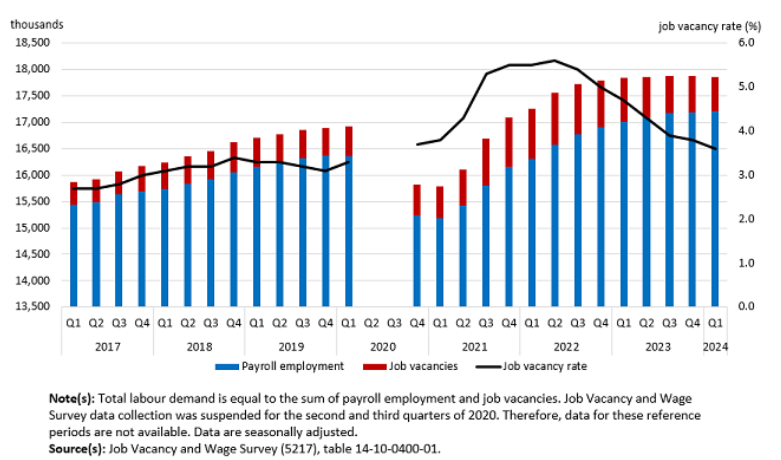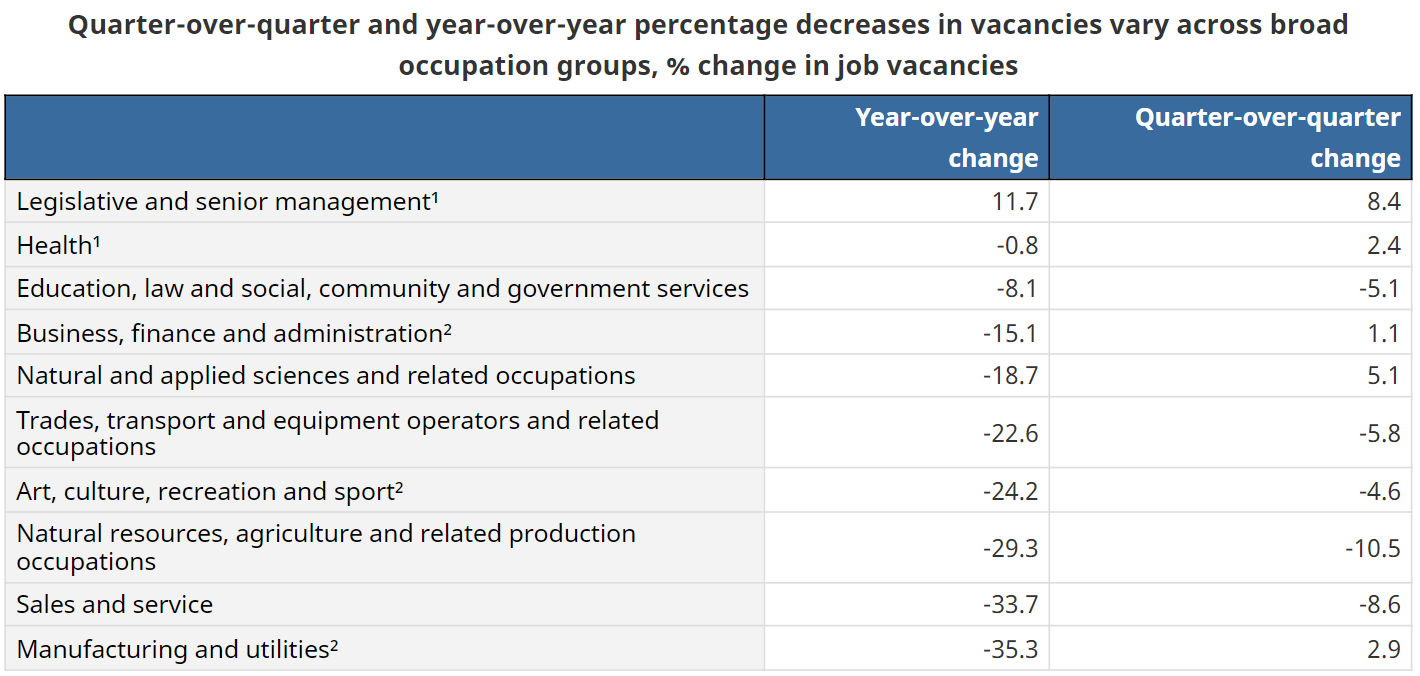
Average hourly wage growth accelerates in Q1: report

The number of job vacancies in Canada continued its decline in the first quarter of 2024, according to a report from Statistics Canada (StatCan).
Job vacancies fell by 24,300 (-3.6%) to 648,600 in the first quarter, marking the seventh consecutive quarterly decline from the record high of 983,600 reached in the second quarter of 2022.
Job vacancies decreased for permanent positions (-24,500; -4.5%), with little change for temporary positions. In the first quarter of 2024, vacancies fell more for full-time jobs (-15,400; -3.1%) than for part-time jobs (-8,900; -5.1%).

Source: Statistics Canada
The job vacancy rate also decreased by 0.2 percentage points to 3.6% in the first quarter of 2024, marking the seventh consecutive quarterly decline.
In March 2024, the job vacancy rate decreased to 3.4%, the lowest since March 2020.
The 10 occupations with the largest annual decreases in job vacancies are the following:
Here are the percentage changes in vacancies across broad occupation groups:

Source: Statistics Canada (StatCan)
With all these decreases, there were 2.0 unemployed persons for every job vacancy in the first quarter of 2024.
“The overall unemployment-to-job vacancy ratio has trended up since the third quarter of 2022,” said StatCan.
“The steady increase in this ratio from the third quarter of 2022 to the first quarter of 2024 was driven both by a decrease in job vacancies (-309,400; -32.3%) and by an increase in the number of unemployed persons (+214,100; +20.3%, as estimated in the Labour Force Survey).”
Job postings related to summer employment dropped this year compared to the past two years, according to Indeed.
Meanwhile, year-over-year, the average offered hourly wage for vacant positions grew at a faster pace in the first quarter of 2024 (+7.3% to $27.25) compared with the rate in the fourth quarter of 2023 (+5.8% to $26.35) and in the first quarter of 2023 (+5.0% to $25.40).
In comparison, year-over-year growth in average hourly wages for all employees was 5.1% in the first quarter of 2024, slightly above the increase of 5.0% in the previous quarter (not seasonally adjusted), according to StatCan.
“Part of these increases in average offered hourly wages for vacant positions was due to a shift in the relative composition of job vacancies from lower- to higher-offered-wage occupations,” said StatCan. “Using a method that holds the composition of job vacancies by occupation at the first quarter of 2023, average offered hourly wages grew by 4.7% on a year-over-year basis in the first quarter of 2024, up from an increase of 3.7% in the fourth quarter of 2023, and from an increase of 3.4% in the third quarter of 2023 (not seasonally adjusted).”
Occupations with the highest annual growth of their average offered hourly wage in the first quarter of 2024 were central control and process operators and aircraft assemblers and inspectors (+20.5% to $37.10) and processing, manufacturing and utilities supervisors and utilities operators and controllers (+9.5% to $35.10).
Meanwhile, there were declines in offered hourly wages for middle management occupations in production and agriculture (-27.3% to $33.35), technical occupations in art, culture, and sport (-9.2% to $29.15), and supervisors in natural resources, agriculture and related production (-8.6% to $29.65).